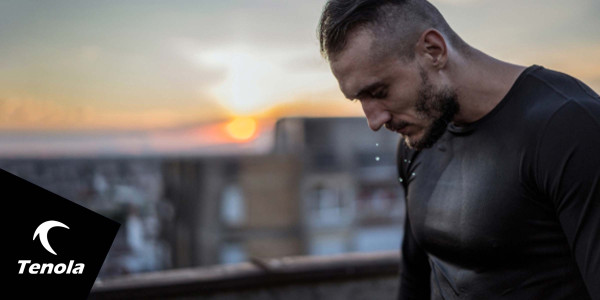
Why is it harder to train and race in hot conditions and how can we make it more enjoyable? The secret to enjoying our training and competitions is being prepared by acclimatizing ourselves to heat especially during the running and cycle sections of a triathlon race.
The normal internal core temperature of a human body is designed to work within a range of 37 to 38 degrees Celsius. If the body core temperature goes above 39 then the body automatically begins to adapt, to protect itself. The body use two protective strategies, one, the brain tells the working muscles to slow down. The blood is diverted away from muscles to the skin. The second strategy happens when cooling takes place through sweating and evaporation. With less blood being sent to the muscles, less oxygen is being supplied to the muscles Muscles need oxygen to work! At 40-41 degrees Celsius heat exhaustion is likely and above 41 degrees Celsius the body starts to shut down resulting in the risk of multiple organ failures.
With training acclimation athletes can improve in each of these areas to perform better in the heat.
You have to do your training sessions in the conditions you will be racing in to acclimatize your body. By training in hot conditions, the body will adapt, and allow improved performance. It takes 10 to 14 days of training in hot conditions to acclimatize the body. Training sessions will initially be shorter and easier of 30 minutes duration, increasing the length of the session by 8-10 minutes per day. If you don’t have the opportunity acclimatize to hot conditions you will need to adjust your race pace.
It is important to replenish lost fluids and electrolytes during training sessions lasting for 90 minutes or more. Hydration is critical to staying cool. Replenishing fluids should be consumed at the same rate of loss due to sweating. Tests have shown that athletes have different sweat rate loss and can vary by up to 2.5 liters per hour. Fluid should contain electrolytes (i.e. sports drinks) to help replace minerals lost during a session. Research has shown that over hydrating can be beneficial and delay the onset of dehydration.
Research has also shown pre-cooling the body before a session or race can be beneficial and help improve performance before reaching the critical body temperature.
Ongoing research has shown that using a sauna after a session can help your body to adapt hot conditions, improving sweat efficiency and improved cooling ability. Again this is a one off sauna session and needs to be factored into your regular training program.
Evaporation is really heat dissipation – sweating, this happens naturally. When we sweat, pores open up, blood moves closer to the surface and moisture is also sent to the surface and evaporation lifts away heat – inducing a cooling effect. In hot, humid conditions the moisture in the air prevents evaporation and the body struggles to dissipate heat. Tipping/dousing the body with water via drinking cups, sponges, ice etc will aid the body and possibly improve your performance in a race.
For triathlon wear that can help improve your performance in hot conditions take a look at Tenola's triathlon suit range >
Tenola founder and CEO Ian Nolan has a lifelong love of all things active and has competed in a variety of sports over the years involving mud, sweat and tears – the latter following various serious sporting injuries! But it was the challenge of the dual or tri-disciplines of Triathlon, testing not only fitness but endurance and skill that truly captivated him and led to an ongoing passion for the sport. Read More >